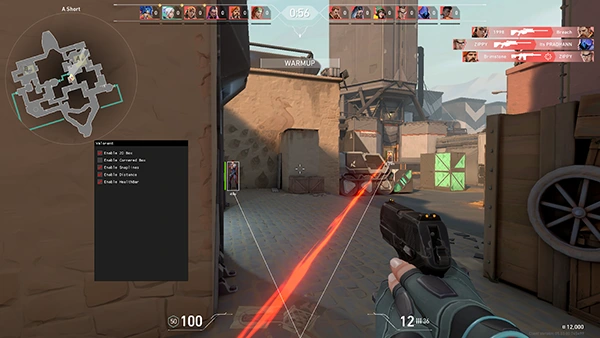Have you heard about Aimbots? If you’ve ever liked or played any First-Person Shooter (FPS) game, then you must be aware of this term. Those who don’t know, let us tell you that it’s basically a way to cheat in a game.
One of the most used lines by gamers is, “I don’t need to get a life. I’m a gamer – I have lots of lives”. Well, guess what, this aimbot will take away all your lives by annihilating you again and again in the game. Doesn’t sound appealing, does it?
In this article, we’ll learn about the science behind Aimbot how it works, and what will happen if any player uses it. So if you are a gamer stay with us and even if you are not still keep reading. Gaining knowledge is not a bad thing, right?
Aimbot can be called a cheat or feature. It uses math and automatically locks your cursor to the enemy’s head, making it easier for you to kill the enemy with one shot.
Games like PUBG, Call of Duty, Counter-Strike, etc., are the victims that have been targeted by this cheat. This feature isn’t inbuilt, instead, people download different files like from SecureCheats or create their own and merge them with the game file to access the aimbot feature.
This software makes the game boring because even after having good skills, players get killed by someone who is simply cheating.

Aimbots are designed by integrating different concepts and methods, and some of their major or most used algorithms and techniques are as follows:
If you’ve paid attention in your math class, you might be aware of this term known as “Vector.” Vectors have two characteristics, magnitude and direction. For example, someone commanded you to come 3 steps forward.
Here 3 steps are your magnitude and the forward is your direction. Magnitude tells you how much of something, let it be speed, distance, or force. On the other hand, direction tells you where to point forward, backward, etc.
Vectors help the aimbot in figuring out where it needs to aim. In-game, your vector is used as the crosshair, and it automatically points at your enemy who is at a certain distance.

One thing that you need to understand is no cheat remains undetected they are hard to detect, but they are not completely off the raider. But why are cheats hard to detect?
After all, we’ve seen many people use it, and they didn’t get in any trouble, right? Here are some reasons why aimbots are hard to detect:
Yes, using an Aimbot can get you in a lot of trouble. For example, if your game server detects any suspicious activity in your game, your account will be banned either permanently or for a few months.
However, if you are caught using any cheats during any esports event, you will lose everything. One of the CS:GO players from India, Nikhil Kumawat also known as “Forsaken” was caught using aimbot during a main event held in Shanghai, China in 2018.
Even tho he was the only one who used Aimbot, his whole team was disqualified. Forsaken was also banned from any esports event for 5 years. Team India received a lot of backlash and the gaming career of Forsaken came to an end.
DID YOU KNOW
If players are caught using Aimbot during a main event of Valorant, their account will be permanently banned.
If you are a fellow user or know someone who uses aimbot just stop. It’s not a pleasant thing and only makes the game monotonous. Go and grind to improve your skills, that way everyone will be able to enjoy it.
We’ve already told you what happens if you are caught using aimbot so be considerate while making any decision. Don’t lose your reputation or your hard work just because of some cheating software.
Anyway, you can also learn about Instagram Story Viewer by going through this article.

Thanks for choosing to leave a comment. Please keep in mind that all comments are moderated according to our comment Policy.